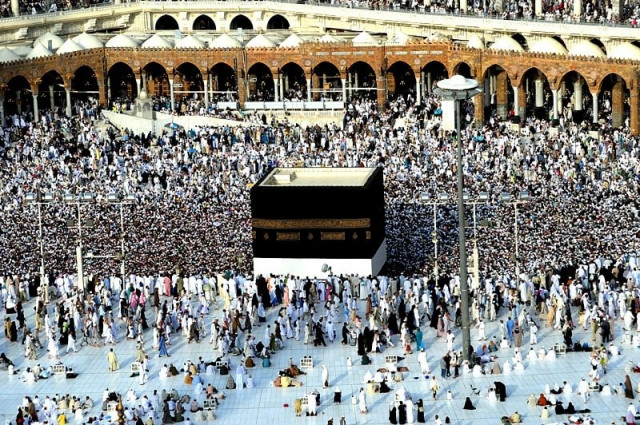Hajj pilgrimage in focus amid MERS virus fears
For any respiratory virus, the mass gathering of the Hajj provides a perfect opportunity to spread.

For any respiratory virus, the mass gathering of the Hajj provides a perfect opportunity to spread. PHOTO: AFP/FILE
Little is known about the new pathogen, beyond the fact that it can be lethal by causing respiratory problems, pneumonia and kidney failure. It can be transmitted between humans, but unlike its cousin, the SARS virus, which sparked a scare a decade ago, it does not seem very contagious.
Even so, for any respiratory virus the mass gathering of the Hajj provides a perfect opportunity to first spread at the two holiest Muslim shrines in the cities of Makkah and Medina, and then travel around the globe at jet speed as pilgrims return home.
The 2012 Hajj drew 3.1 million people – and this year's event likewise occurs in October, as the northern hemisphere slides into the season for coughs and sneezes.
UN World Health Organisation (WHO) head Margaret Chan sounded the alarm to ministers at the agency's annual congress in May.
"We need to get the facts clear and get the appropriate advice to all your countries where your pilgrims want to go to Makkah. It is something quite urgent," she said.
Experts point first and foremost to figuring out the basics of the Middle East Respiratory Syndrome (MERS) coronavirus.
Is it transmitted by contact – if a patient contaminates his home or workplace with droplets containing virus? Or is it done by breathing in virus from coughs and sneezes? What is the best treatment for it? What about a vaccine? Are there risks of viral mutation? And is there an animal host which acts as a reservoir for the virus?
The first recorded MERS death was in June 2012 in Saudi Arabia. The count has ticked up steadily, with a flurry this May and June taking it to 77, the bulk of them in the kingdom.
Forty MERS patients have died to date, an extremely high rate of 52 percent, compared to nine per cent of the 8,273 recorded patients with SARS, which was centred on Asia.
But again, the tally of people who have fallen ill with MERS but not been diagnosed with it, or who may have been infected but not developed symptoms, is simply unknown.
As the fight for knowledge unfolds behind lab doors, the WHO is urging nations to monitor respiratory infections, especially among patients returning from the Middle East, but has held off calling for travel restrictions.
"This is really a new phenomenon that we're dealing with," Keiji Fukuda, WHO assistant director general for health security, told the International Conference on Prevention and Infection Control in Geneva this week.
"We don't know what the potential is yet, based on the information we have, for sustained human-to-human transmission. We don't know what the full geographic extent of this virus is right now."
Leading virologist Laurent Kaiser of the Geneva University Hospitals told AFP: "It's really a balance between too much precaution and no precaution. At this time, we have to be worried, we have to be careful."
While MERS centres on Saudi Arabia, there have been laboratory-confirmed cases originating in Jordan, Qatar and the United Arab Emirates.
Britain, France, Germany, Italy and Tunisia have had cases who were either sent there for care or who fell ill after returning from the Middle East. France, Italy, Tunisia and Britain have also seen limited transmission among patients who had not been to the Middle East but had close contact with people who had.
So far, MERS has essentially been found in nations with health services capable of tracing and tackling such diseases. But the Hajj draws a broad spectrum of Muslims, including from poor countries which struggle to cope even with commonplace diseases.
"We don't know if the disease is there right now. They don't have surveillance," Saudi Arabia's deputy health minister, Ziad Memish, told AFP on the sidelines of the Geneva conference.
Health experts give praise to Saudi authorities for beefing up vigilance for infectious diseases over the years.
They also note that the Hajj has successfully ridden out two previous viral episodes in the past decade – SARS in 2003 and H1N1 influenza in 2009, although the difference now is that Saudi Arabia is the apparent hotbed of MERS.
Memish, who is also a medical professor and runs a WHO-accredited research centre on the medicine of mass gatherings, pointed to the success of lower-scale umrah pilgrimages to Saudi Arabia this year.
"I think it's comforting that as of today, four and a half million people have performed the umrah in Makkah and nothing has happened," Memish said. "But of course we're making all the arrangements and all the planning to do active surveillance, to be able to intervene."



















COMMENTS
Comments are moderated and generally will be posted if they are on-topic and not abusive.
For more information, please see our Comments FAQ